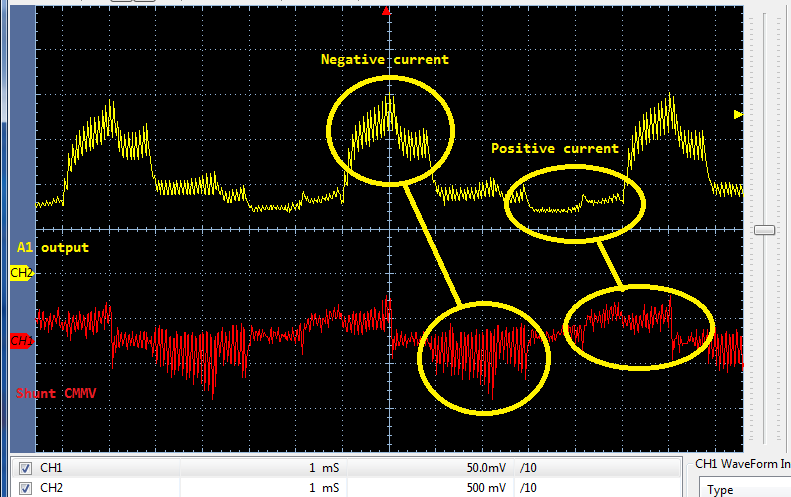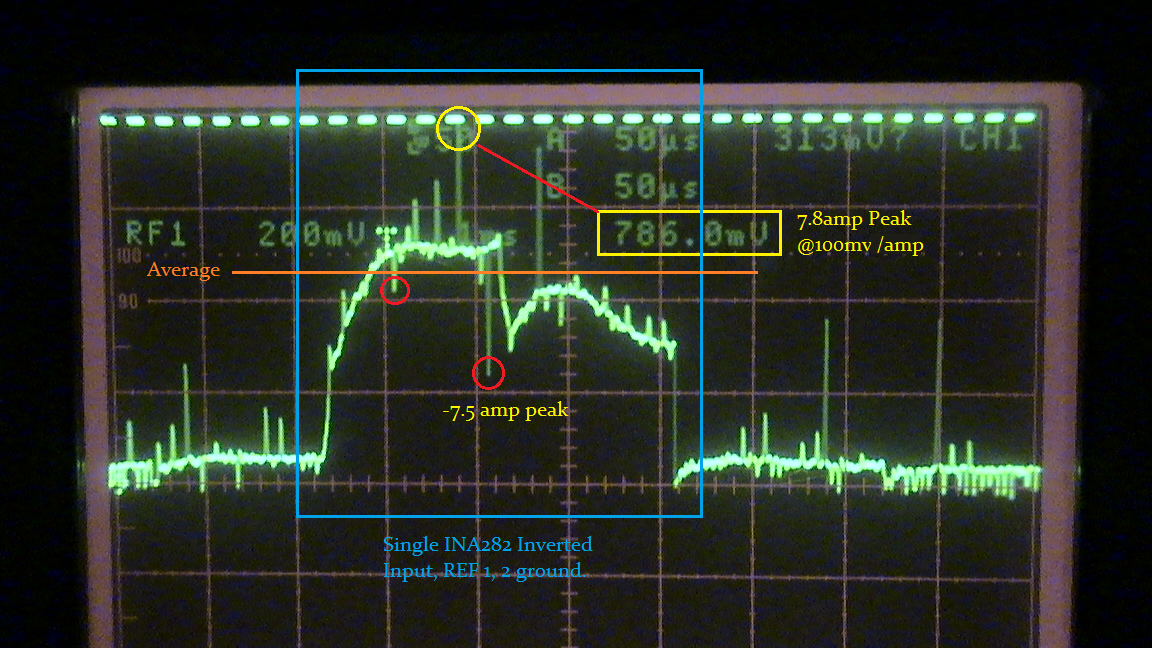Other Parts Discussed in Thread: INA282,
Previous thread: https://e2e.ti.com/support/amplifiers/current-shunt-monitors/f/931/p/580491/2131723#2131723
Low side inductive current monitoring is prone to Delta V/t transients that should not be part of the amplified output signal yet are very present.
Datasheet header:
The negative common-mode voltage allows the device to operate below ground, accommodating the flyback period of typical solenoid applications.
Enhanced PWM rejection provides high levels of suppression for large common-mode transients (ΔV/Δt) in systems that use pulse width modulation (PWM) signals (such as motor
drives and solenoid control systems). This feature allows for accurate current measurements without large transients and associated recovery ripple on the output voltage.
That latter claim is not exactly true for 240 low side monitoring of rapidly changing periodic PWM CMMV signals.
We noticed INA282 REF1+2 tied to ground seem to block much of the flyback pulses we are seeing on the A1/A2 outputs. These cyclic pulse cycles in sync with PWM frequency (12.5kHz). That seems to hold output settling time above spec and actual sensing inductive CMMV crossing the shunt, thereby effecting SAR 75amp full scaling factor 10mv/A. Reverse or negative current below ground appears to cross PWM rejection circuit and distort the input gain scale set by REF bias pins. The odd part is the datasheet states REF1+2 tied to GND produces Unidirectional current detection. Yet the scope captures show some inverted pulses in the ratio metric current ramp being created. It would seem that is not entirely true as it relates to isometric monotonic linear gain of CMMV.
1. How is latter possible if inverted (negative) pulses are being created in the positive current measure of so called Unidirectional current flow?
2. How can we mitigate high Delta V/t CMMV input from amplifying signals below ground and or extending output settling time from that condition?
3. Does REF1+2=GND make INA devices ignore voltages below CMMV and shunt idle mode threshold?
4. Why does the 282 seem to better isolate the differential amplifier from low side monitoring of Delta V/t, AKA inductive flyback?
5. Are there other INA family devices with TSSOP package layout similar to A1 pin out?





